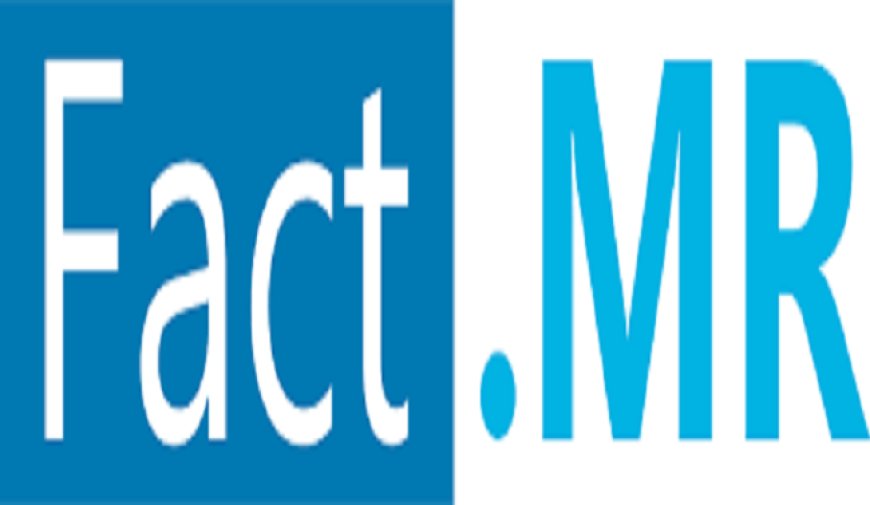Digital Therapeutics Start-ups Gain Traction in Rare Disease Market
The global rare neurodegenerative disease treatment market is currently estimated to be US$ 72.9 billion and likely to reach US$ 119.2 billion by the end of 2033.

The global rare neurodegenerative disease treatment market is currently estimated to be US$ 72.9 billion and likely to reach US$ 119.2 billion by the end of 2033. During this time, the growth rate would track a CAGR of 5% over the next ten years. Steady growth for these would be due to various key factors, such as growing investments in research and development and rising awareness of the diseases, coupled with increasing expenditure on healthcare.
Key Neurodegenerative Disorders
Neurodegenerative disorders are a class of diseases that involve progressive loss of function or structure of neurons. The better-known disorders in this category include Alzheimer's disease, Parkinson's disease, and motor neuron diseases like Amyotrophic Lateral Sclerosis (ALS). A particularly challenging aspect of these disorders is that many of them are associated with severe disability and hence seriously impact the quality of life of those affected.
Challenges and Opportunities
The treatment landscape for rare neurodegenerative diseases is associated with various challenges and opportunities. The prime challenge is the availability of very few cures for these diseases; most of them still remain without any definitive treatments. However, increasing research activities for the discovery of new treatment methods are a great opportunity. Besides that, government initiatives are also supporting and providing a substantial boost to the growth of the market.
Companies Covered in This Report
Allergan Plc
GlaxoSmithKline Plc
Bayer AG
Teva Pharmaceuticals Industries Ltd.
Novartis AG
F. Hoffmann-La Roche Ltd.
Merck KGaA
Johnson & Johnson
Sanofi
Pfizer Inc.
Country-wise Insights
The frequent introduction of new treatment drugs and therapies and the well-established infrastructure of the healthcare system in the United States offer a highly opportunistic market environment for providers of rare neurodegenerative disease treatments. Among some other factors, major biopharmaceutical companies, extensive research activities, and rising approvals for innovative treatment products fortify prospects for market growth. Furthermore, increasing awareness about the symptoms of neurogenerative disorders and an aging population are also forecasted to continue boosting the sales of such treatments until 2033, thus targeting further development for better treatment outcomes for disorders such as ALS and Huntington's disease.
Similarly, Japan is the major driving force behind the surge in demand for the treatment of rare neurodegenerative diseases during the forecast period. These disorders are more common in elderly individuals, so investment in appropriate research and the development of new neurological therapeutics are expected to reach new heights. The healthcare landscape in this country continues to be enriched with a growing awareness about dementia, a strong healthcare research focus, support from encouraging government initiatives, and large investments in medical infrastructure. All these factors together increase the chances of market growth. Recent developments, including the research and development on stem cells at Okayama University, have opened new areas with several promises for the treatment of ALS and other fatal diseases. This increases the demand with the growing prevalence of neurodegenerative diseases in countries like Germany, France, and the United Kingdom in the European region. Continued investments in R&D and supportive government healthcare initiatives are therefore projected to further raise the market for rare neurodegenerative disease treatments in these regions over the next ten years.
Market Competition
Key players in neurodegenerative diseases therapy are consciously working to expand the set of services offered, realizing that the needs of the patient and his or her family are unique and changing. Mainly, this shift occurs because it has been realized that no such complex disease could be treated without considering its holistic approach. Top providers are adopting innovation and, subsequently, new products and services that can give comprehensive support for rare neurodegenerative diseases therapy.
Large clinical services company Labcorp has announced a major breakthrough this past July 2022: the launch of its very first blood test able to detect and diagnose symptoms of many neurological diseases, including dementia, ALS, and Parkinson's, by simply tracking a certain protein running in blood circulation called neurofilament light chain.
How Big is the Rare Disease Treatment Market?
The global rare neurodegenerative disease treatment market was valued at US$ 72.9 billion for the year 2023 and is expected to grow steadily at a compound annual growth rate of 5% over the years to reach US$ 119.2 billion by the end of 2033. This growth will be driven by growing investments in healthcare research, rising awareness regarding rare diseases, and supportive government initiatives.
What is the Rare Disease Market Segmentation?
The rare neurodegenerative diseases treatment market is segmented based on indication, drug class, distribution channel, and region. Based on indication, it includes treatments for multiple sclerosis, Alzheimer's disease, Parkinson's disease, acute migraine, autism, narcolepsy, Amyotrophic Lateral Sclerosis, Attention Deficit Hyperactivity Disorder, spinal muscular atrophy, Tourette syndrome, Huntington's disease, and other associated disorders. The segment based on drug class includes neurotransmitter agents, neuroprotective agents, biologics, and other drugs. The distribution channel segment includes hospital pharmacies, online pharmacies, and retail pharmacies. By geography, the market is segmented into North America, Latin America, Europe, Asia Pacific, and Middle East & Africa. These segments provide an overall view available in the market, by treatment areas, types of drugs involved, and distribution methods that drive the growth and dynamics of the rare neurodegenerative disease treatment market.












